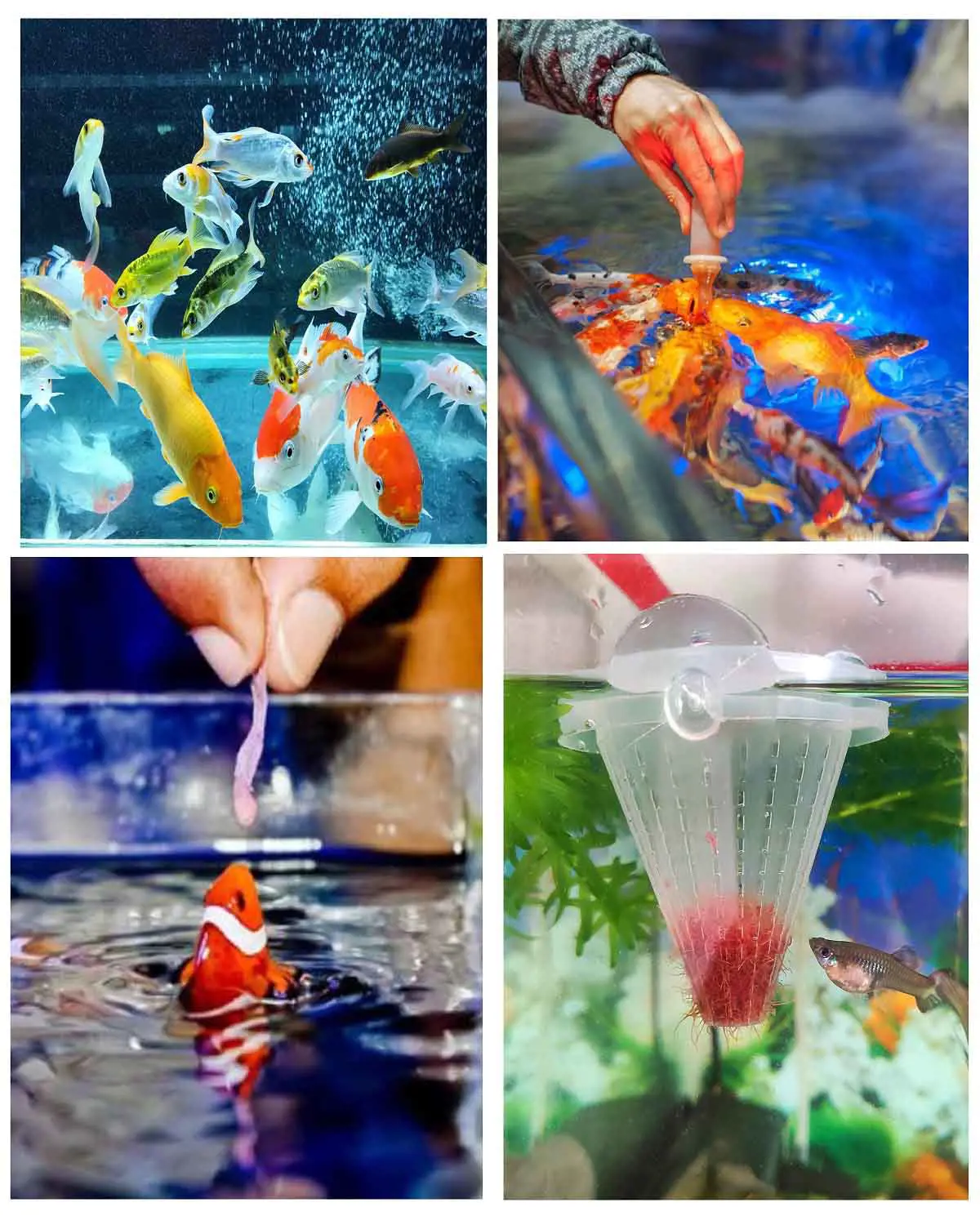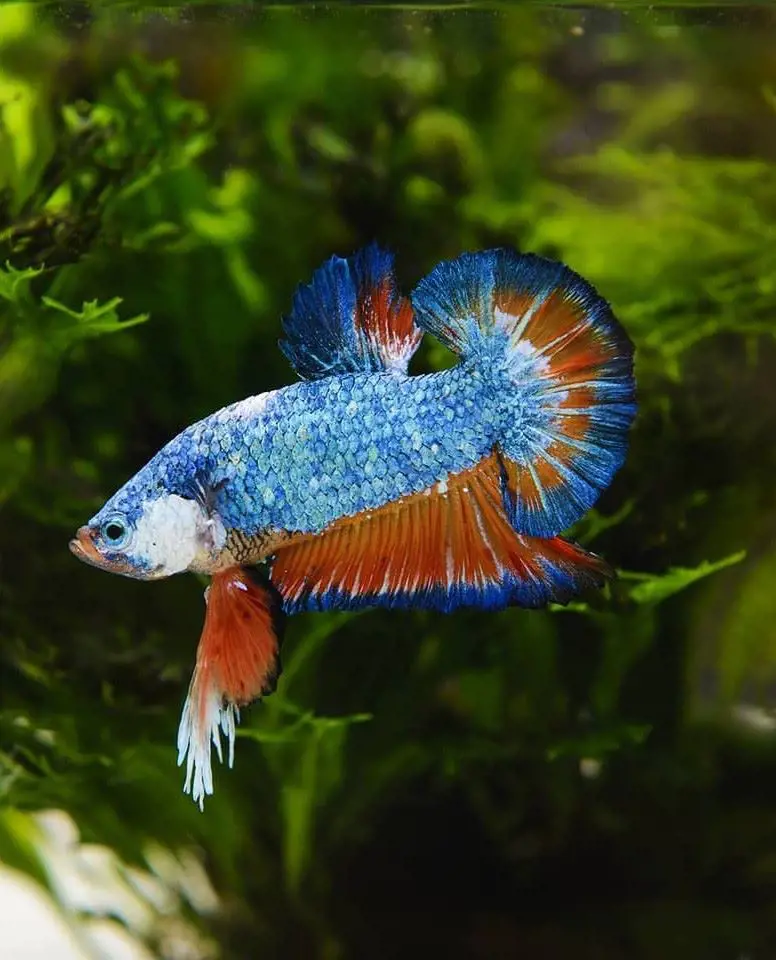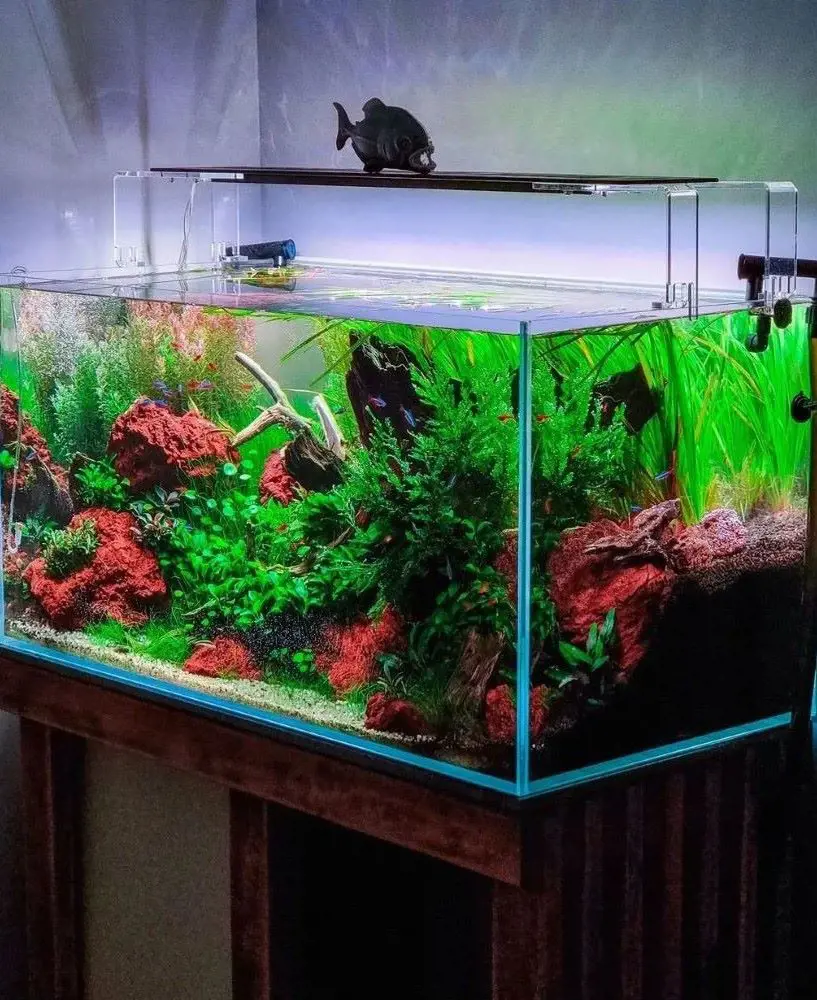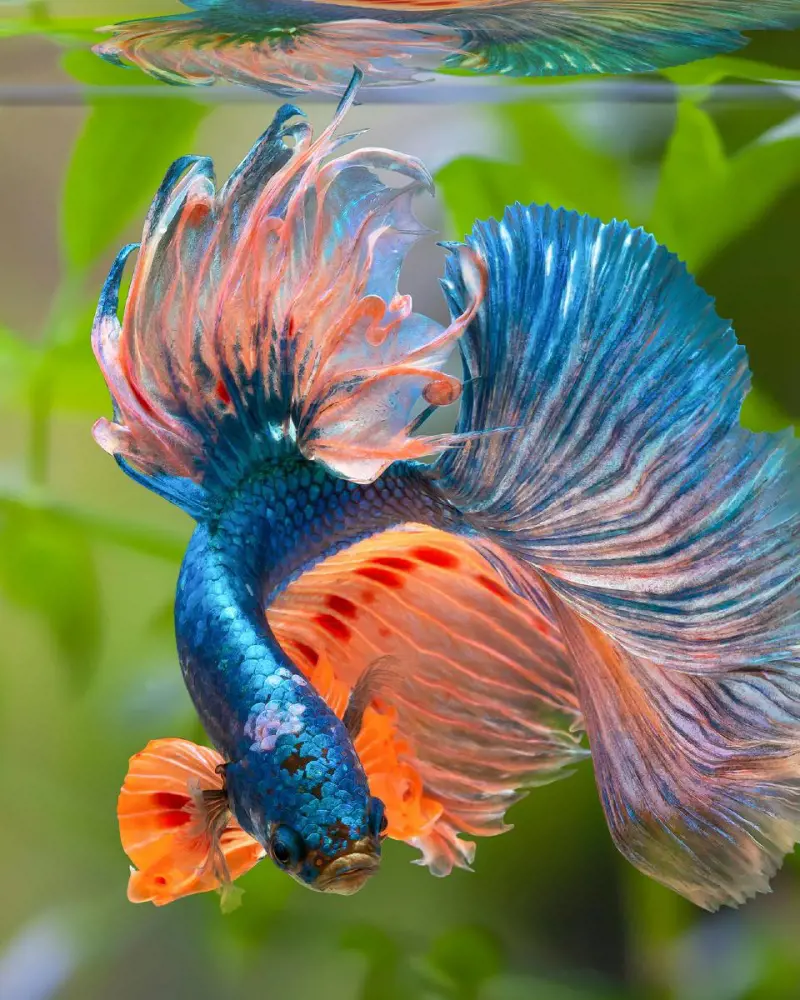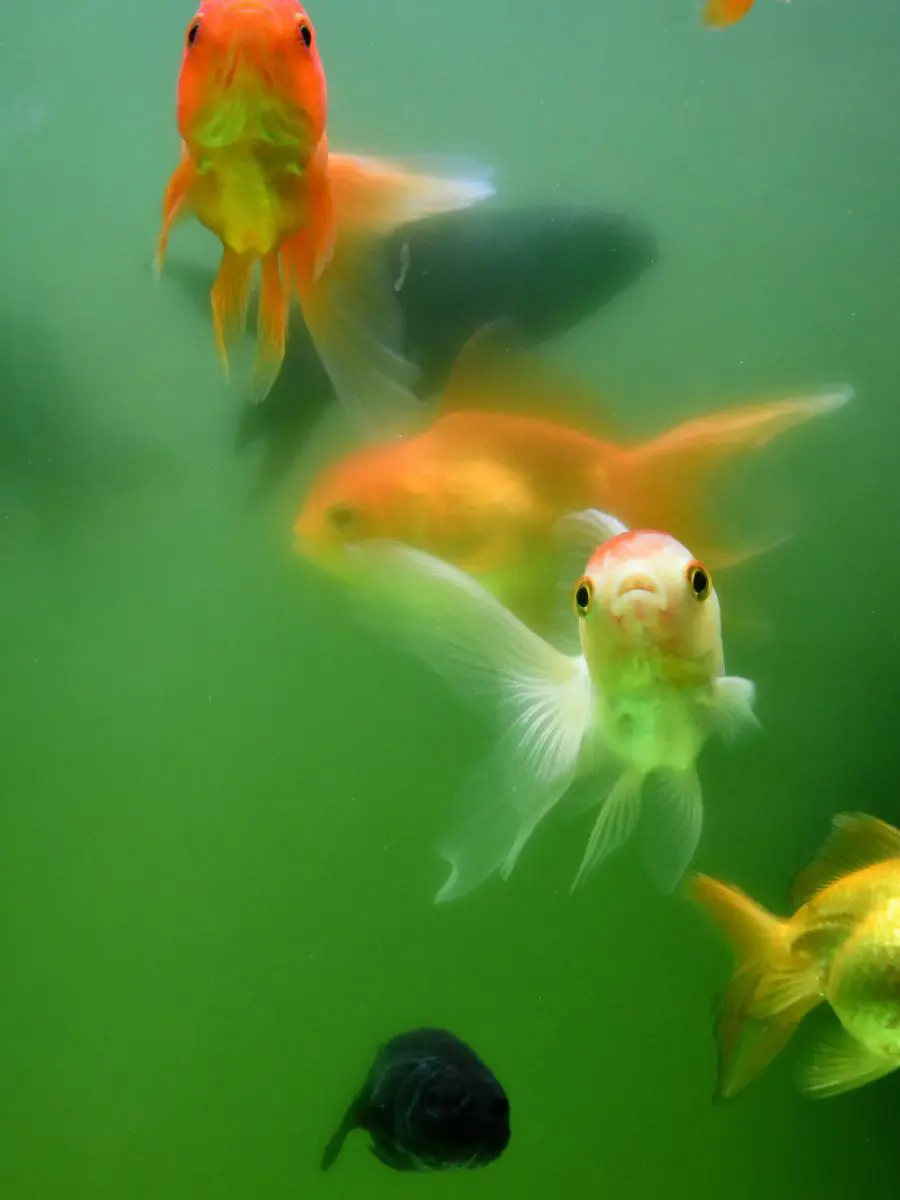Pictus Catfish Care Guide And Tank Mates
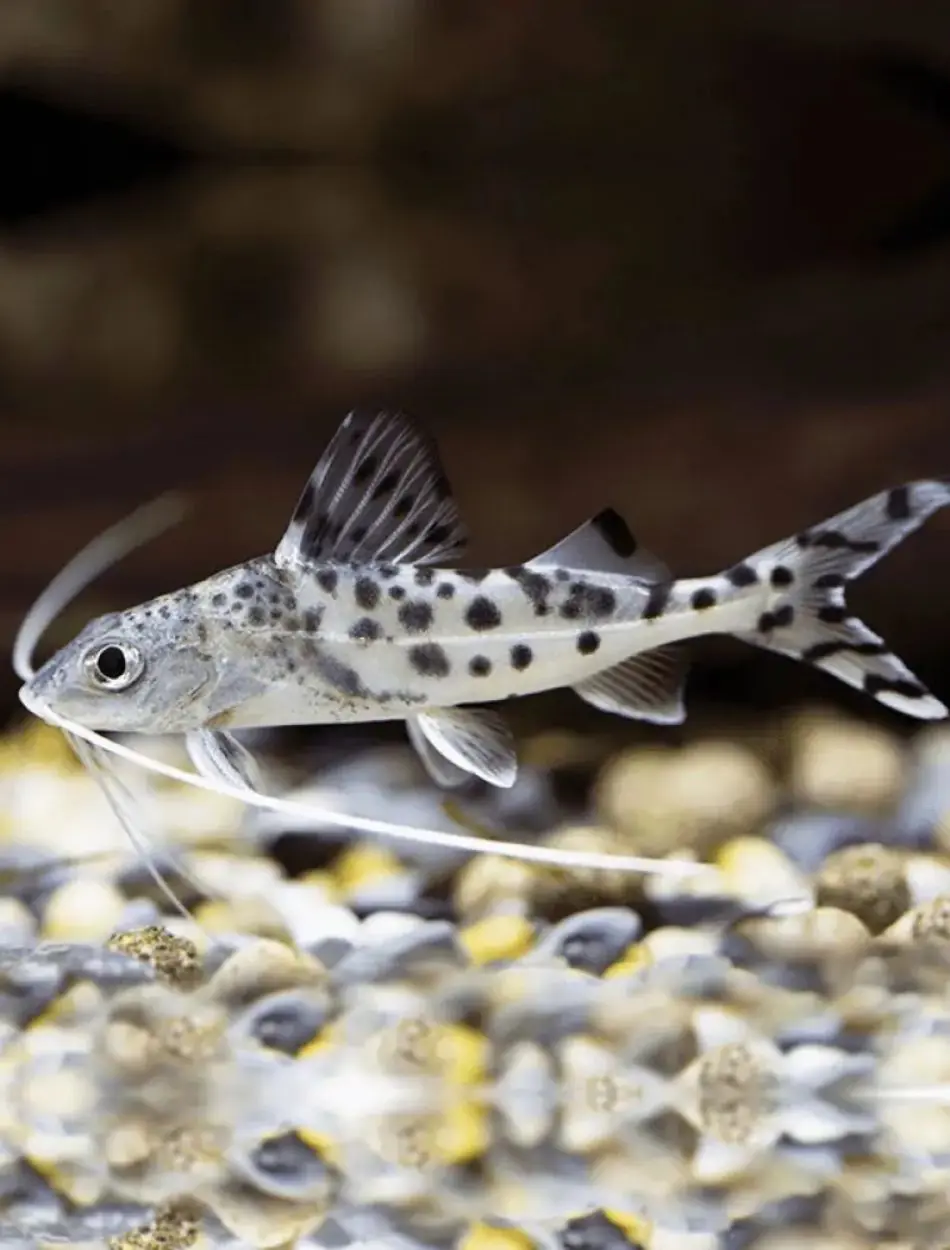
Out of all freshwater species, the Pictus Catfish has to be one of the most interesting because it looks amazing and is quite active. This particular catfish is found in the Amazon and Orinoco River basins and sports a shiny silver body color marked with black spots and elongated whisker-like barbels.
These barbels are important to the fish for other reasons because they particularly help with efficient scavenging and maintaining the cleanliness of the tank. So, whether an amateur or an expert aquarist, it's very much necessary to learn all about the care and behavior of Pictus Catfish if you intend to raise the fish in a healthy and thriving ambiance.
Overview
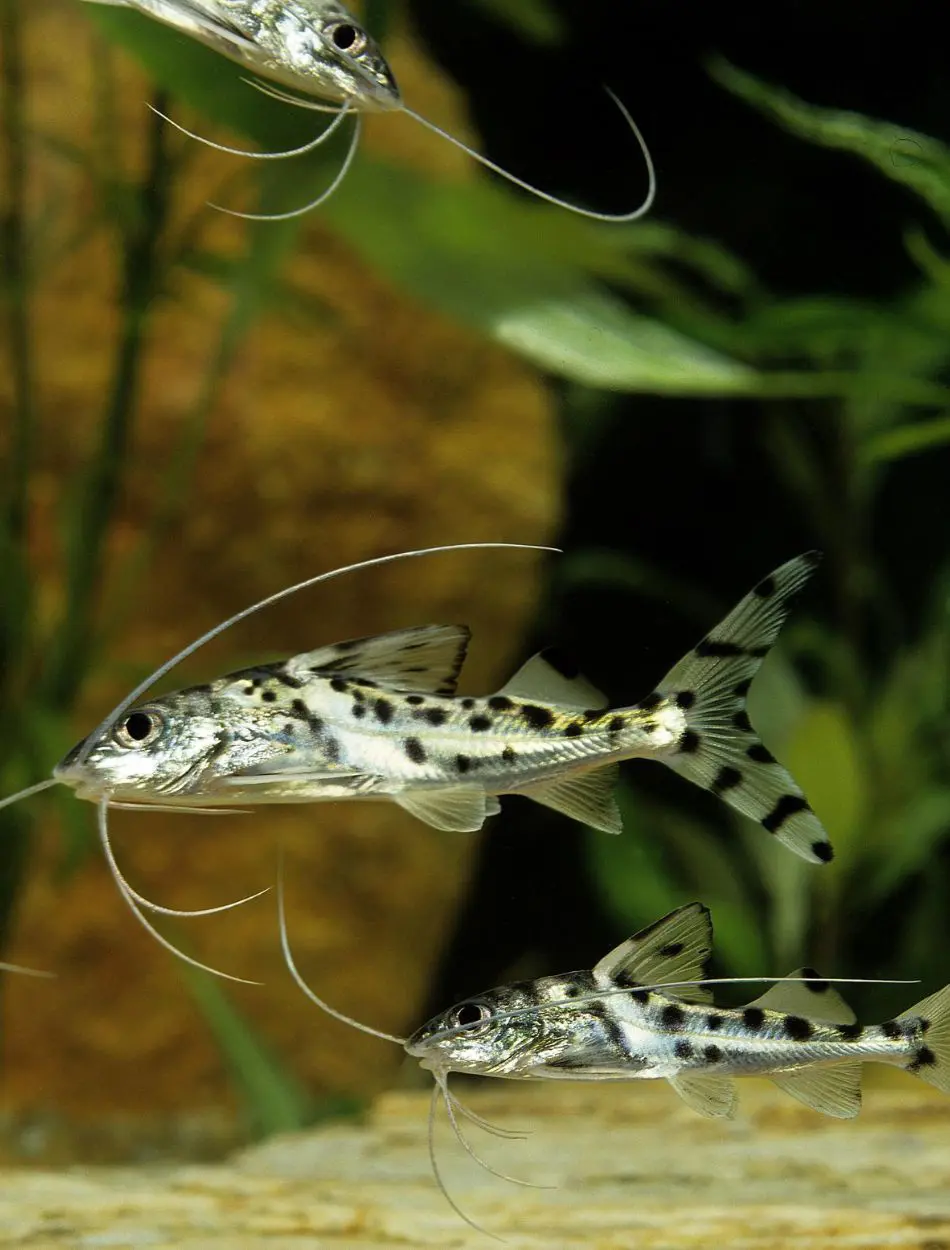
Pictus Catfish are active and can attain a length of about 5 inches. If well taken care of, they can live for up to 8–10 years, calling for the long-term commitment of an aquarist.
They have a nocturnal tendency, and therefore they will always be active at night and seek space to wander off. With diet, they are peaceful, although their energetic swimming style and tendency to nip on fins call for careful consideration in the choice of tankmates.
Diet And Nutriton Of Pictus Catfish
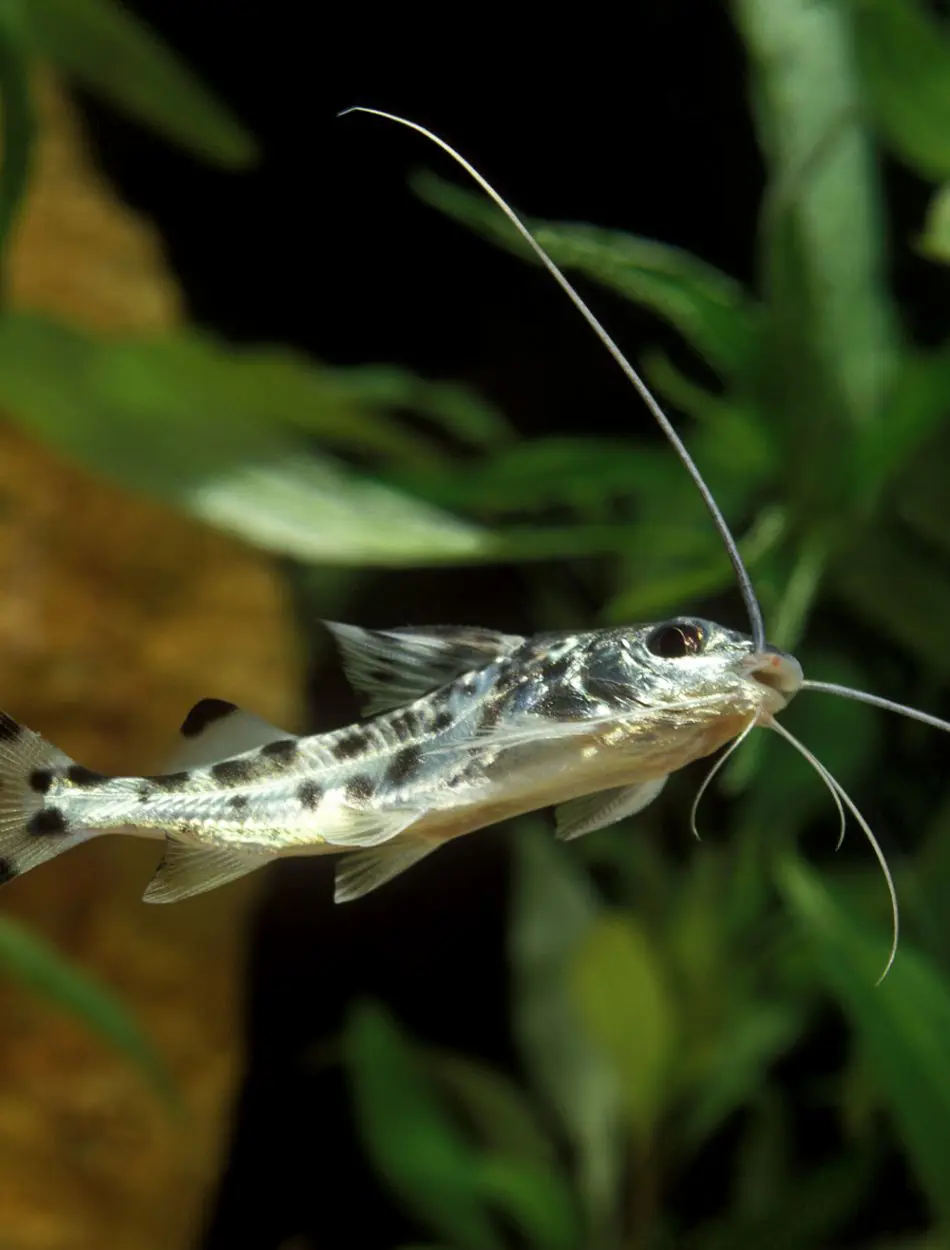
Pictus Catfish are omnivores with an amazing appetite, thus putting lots of food in possessing a significant place in keeping them healthy, colorful, and in great shape.
Hardy swimmers, however, require much variation in the diet that must be well-balanced to mimic the natural hunting behavior of the species.
A balanced diet not only fuels their energy but also strengthens their immune system, also it intensifies the beautiful coloration of silver with black spots.
Sinking Pellets
- Start with high-quality pellets as part of your daily feeding regimen.
- Sinking pellets are designed to drop to the bottom of the tank, where Pictus Catfish would forage for food in a more natural setting.
- Pellets provide a mix of proteins, fats, and essential nutrients in proper balance based on the nutritional needs of bottom dwellers.
- Look for those that are high in spirulina or krill, as these are known to enhance the rich coloration and general pertness of fish.
Frozen Foods
- Add some frozen bloodworms, brine shrimp, and daphnia to their diet as a treat to enhance their protein supply.
- These foods are high not only in protein but also come in small aquatic creature sizes, which are close to what the Pictus would hunt in the wild.
- Offering frozen foods one or two days a week will naturally grab their predatory instincts and offer them mental stimulation, allowing natural behaviors such as scavenging and hunting.
Vegetable Treats
- It will offer some diversity and vital nutrients in their diet when provided with blanched vegetables, including Spinach, Zucchini, and Peas.
- These vegetables contain vitamins and minerals that play a major role in digestive health and increasing immunity.
- Blanching makes the vegetables softer and easier to digest for the Pictus Catfish so it can consume them and obtain all nutritional values from this.
- Feeding them with vegetables on a regular duration can also prevent constipation which is caused due to a high intake of main protein elements .
Living Foods
- Add some live food to include in this their diet like tiny insects or worms to up the enrichment level.
- These live foods more closely approximate the natural prey of the Pictus Catfish and give the fish both nutrition and the opportunity to perform their hunting behavior.
- Chasing and capturing live foods is a satisfying activity both for the fish and the aquarium, allowing the fish to maintain its agility and alertness.
- However, live foods must be introduced cautiously into the tank to avoid introducing parasites or other contaminants.
Feeding Schedule
- Feed your Pictus Cat twice a day in small portions so that it can finish within minutes.
- Overfeeding can result in excess food settling on the bottom and decaying in the tank.
- It will particularly deplete the quality of the water, which may in turn make the fish sick, obese, or cause constipation.
Keep your Pictus Catfish healthy and energetic, and thrive in an aquatic environment by keeping a consistent feeding schedule and portions in check.
Ideal Tank Set-Up
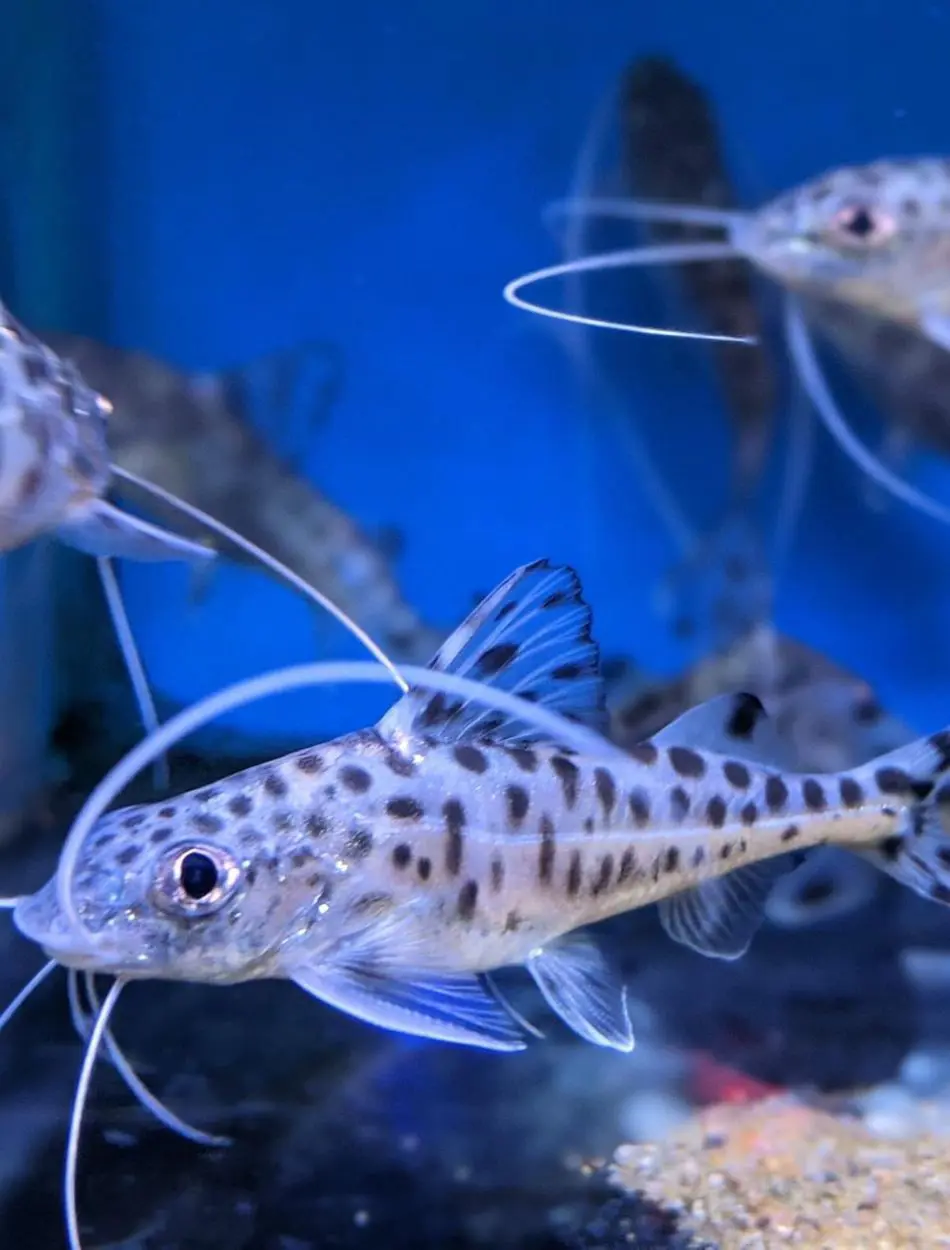
Creating a suitable environment for Pictus Catfish is very crucial for their well-being. Consider the following set-up recommendations:
Tank Size
- Pictus Catfish are very active swimmers; therefore, they need adequate space to swim around without feeling cramped.
- This makes it essential to keep the fish at a minimum of 55 gallons to meet their energy and avoid excess stress.
- Lower volumes would make the fish more stressed, resulting in possible aggression and territoriality.
- The larger volume also means the waste products are diluted over a sizeable volume; thus, a better quality of water can be maintained.
Water Parameters
- The edge in maintaining proper water parameters cannot be overstated for the sake of Pictu's presence.
- The optimal water temperature needed is between 72-80°F, matching the natural tropical habitat of this fish.
- A pH of 6.5-7.5 supports their physiological processes in the tank in a neutral to mildly acidic setting.
- Water should also be moderately hard to keep the parameter settings stable and thus stress and disease-free.
Substrate
- Doing this protects the delicate barbels as the Pictus Catfish forages for food in and around the bottom of your tank.
- Fine sand or rounded gravel are good choices as they reduce the risk of damage from contact with the substrate and yet still provide the needed texture to establish a natural foraging environment.
- Such substrates, ranging from coarse to sharp, though, can inflict injury on its barbels, which in some of the worst-case scenarios cause infections.
- A soft substrate also gets added to the tank since it enhances aesthetics for a more natural look.
Decor
- Driftwoods, caves, and plants can give ideal hiding spaces for the Pictus Catfish.
- All the mentioned tips enhance a more natural look in the environment which in turn makes the fish feel relaxed hence reducing stress.
- It will also be possible to create territories with the setting, and this averts aggression among the tank mates.
- The setting also provides some shaded places allowing the nocturnal creatures to come out of their hiding places and exhibit as much natural behavior as possible.
A well-done tank setting is non-stressful, and as a consequence, lessens the chances of tank fish diseases like it.
Pictus Catfish Behavior
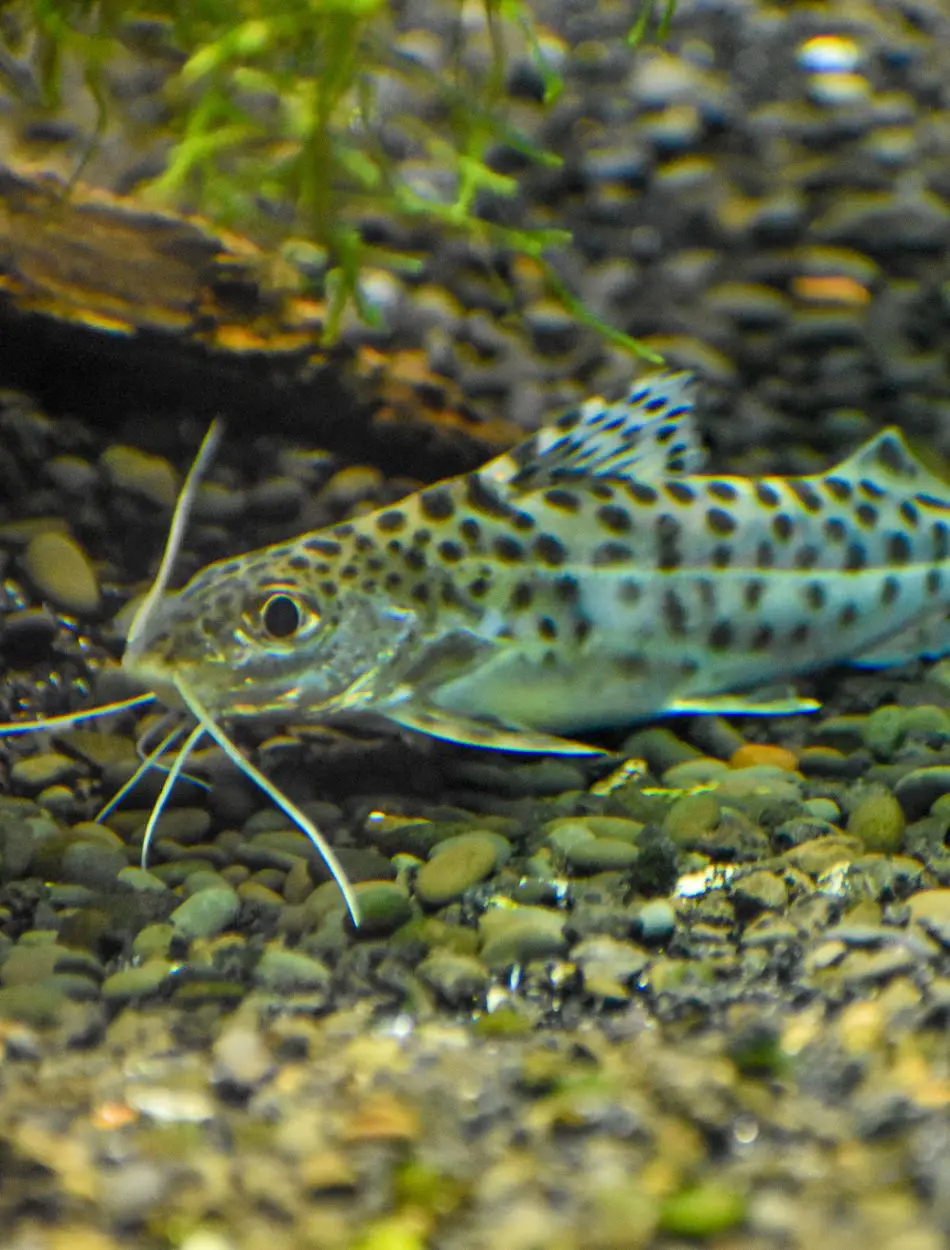
They are lively and social fish, known for their energetic and playful behavior. Native to the rivers of South America, they are most active during the evening and night, though they may also display activity during the day in a well-lit aquarium.
Pictus catfish are schooling fish, preferring to be in groups of at least five or more. When kept in smaller numbers, they can become stressed or shy, often hiding or displaying erratic swimming behavior.
These catfish are bottom-dwellers and enjoy exploring their environment, constantly scavenging the substrate for food. Their barbels, or whiskers, help them navigate and locate food in murky waters.
Breeding
Specific environmental needs and natural breeding urges are the main reasons it is really difficult to rear a Pictus catfish from maturity. The reasons are detailed below:
Difficulty in Breeding
- The fact that few have succeeded in breeding Pictus Catfish in a home aquarium setting can be traced to their breeding requirements, which are quite hard to throw up outside their natural habitat.
- They require very specific water conditions, and even with everything in place, there is still no guarantee that they will spawn.
- Most breeding that occurs within captivity is at random or under circumstances that are not fully replicated, thus even experienced hobbyists find it difficult.
Seasonal Cues
- In their natural habitats, Pictus Catfish reproduce during the rainy season and since then there will be drastic seasonal changes in water such as temperature, pH, and oxygen.
- These changes will trigger them to breed but are difficult to reproduce in an aquarium.
- What is simulated in the changes in the water parameters, in this case, what triggers the breeding nature in them, but these are difficult to reproduce in the controlled condition due to advanced knowledge and control that is difficult to perfect in replicating an aquarium environment.
Separate Breeding Tank
- If breeding Pictus Catfish is being attempted, it is better if done in a separate tank.
- Ideally set up to simulate a cooler, highly oxygenated environment found in the wild during the rainy season.
- A light current, again to simulate river conditions, should be ensured so that the water stays clean and well-oxygenated.
- By doing so, it's possible to create an environment that presumes reproduction, although this does not guarantee success.
Care for Fry
- Pictus Catfish fry are delicate and must have some particular conditions to survive.
- They must be fed a significantly fine grind of food or even special fry food until large enough to feed on regular feeds.
- Fryers are very sensitive to water problems, so keeping them very clean is essential; to stress reduction.
- Even after reaching this stage, it still is not easy to help them grow into adult fish.
Due to the complexity and specific conditions required, breeding Pictus Catfish is generally suggested for advanced aquarists with the resources and knowledge to completely mimic their natural habitat.
Pictus Catfish Tankmates
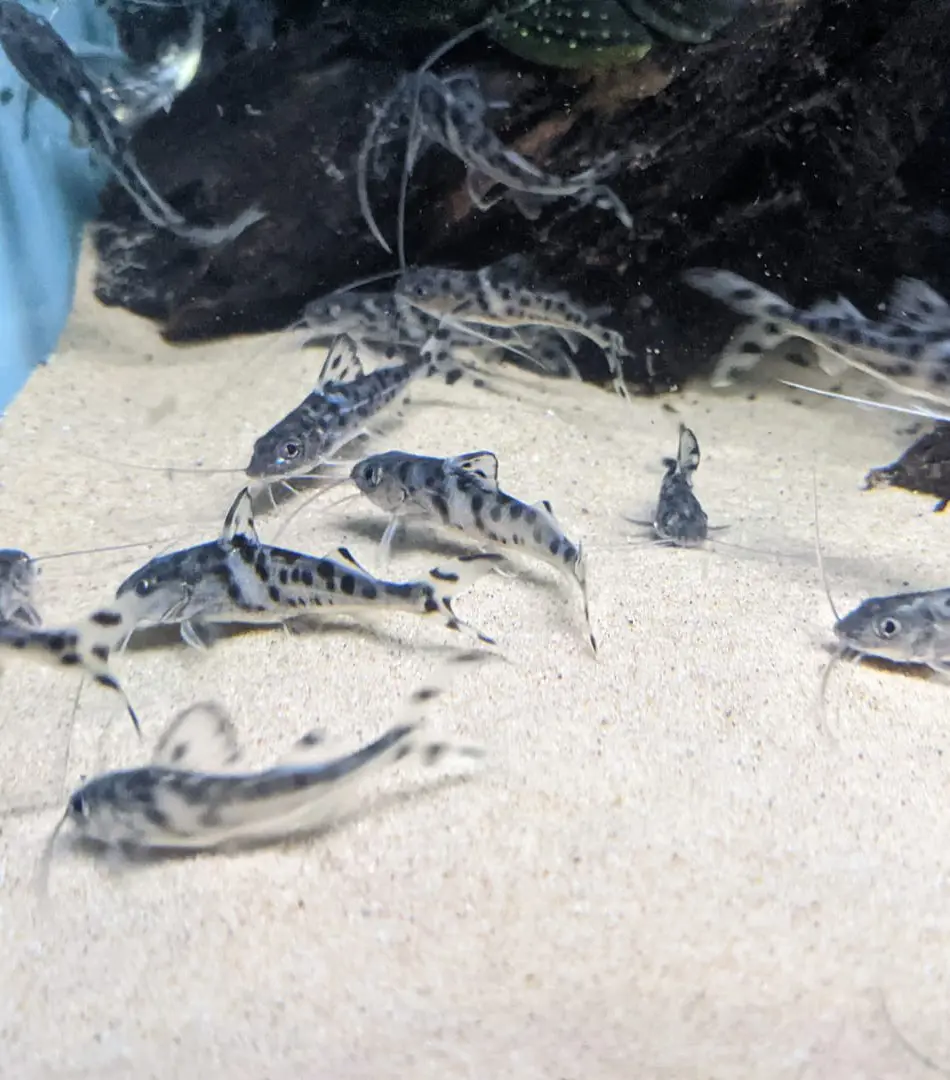
Fish tank mates that you choose should be compatible with other members of the tank ecosystem. Community Fish are the best tank mates with Pictus Catfish wherein the community consists of other peaceful fish and these communities include:
Peaceful Fish
- Pictus Catfish can live tranquility with other community fishes which have a peaceful nature but are well equal to their speed darting.
- Good tank mates include tetras, rasboras, and larger corydoras; these fish are small, agile, and rarely, if ever, instigate an attack.
- The reason they coexist is for their comparable size and personalities that pan out to a less stressful and hostile tank.
- The result of the symbiotic relationship is that the tank will be a mixture of varieties living together in harmony, all without causing harm to the behaviors of another
Avoid Sluggish Fish
- They are not compatible with Pictus Catfish and adding such relatively slow-swimming fish that have long fins, including a guppy, an angelfish, a betta, and a fancy goldfish into the same tank as them is a fatal mistake.
- These are also weaker and finicky types, so it is stereotypical to say that these fish often succumb due to the curious and faster Pictus Catfish. The rapid, erratic movements of Pictus might stress out these slow movers and result in health problems or even get hurt.
- Ensuring that the energy levels between fish sharing the same aquarium is particularly important to avoid them causing undue harm to each other.
Similar Size and Temperament
- Do not house any fish that may either be too aggressive compared to the Pictus or is much larger, thus viewing the pictus as a threat or as a snack.
- Aggressive fish will dominate the tank and cause the Pictus to be unduly stressed and possibly injured.
- In this regard, fry of any sort need not be applied as the Pictus will undoubtedly catch and eat them.
- Members of a similar size and temperament demonstrate a harmonious environment.
Bottom Dwellers
- While other bottom dwellers for a Pictus Catfish tank should be selected, care should always be taken to ensure that food and space competition are avoided at all costs.
- While some of these bottom dwellers, such as the larger Corydoras, would generally coexist well, others would possibly directly compete with Pictus for food and territory. This can lead to turf wars and excessive stress.
- Peace among bottom dwellers is best sought by providing ample hiding places and territories, which would help reduce competition among themselves and allow harmonious living.
With proper tank mates, you can combine an assembly of an as much stress-free and well-balanced community that is healthy for every single creature in the aquarium.
Common Health Issues
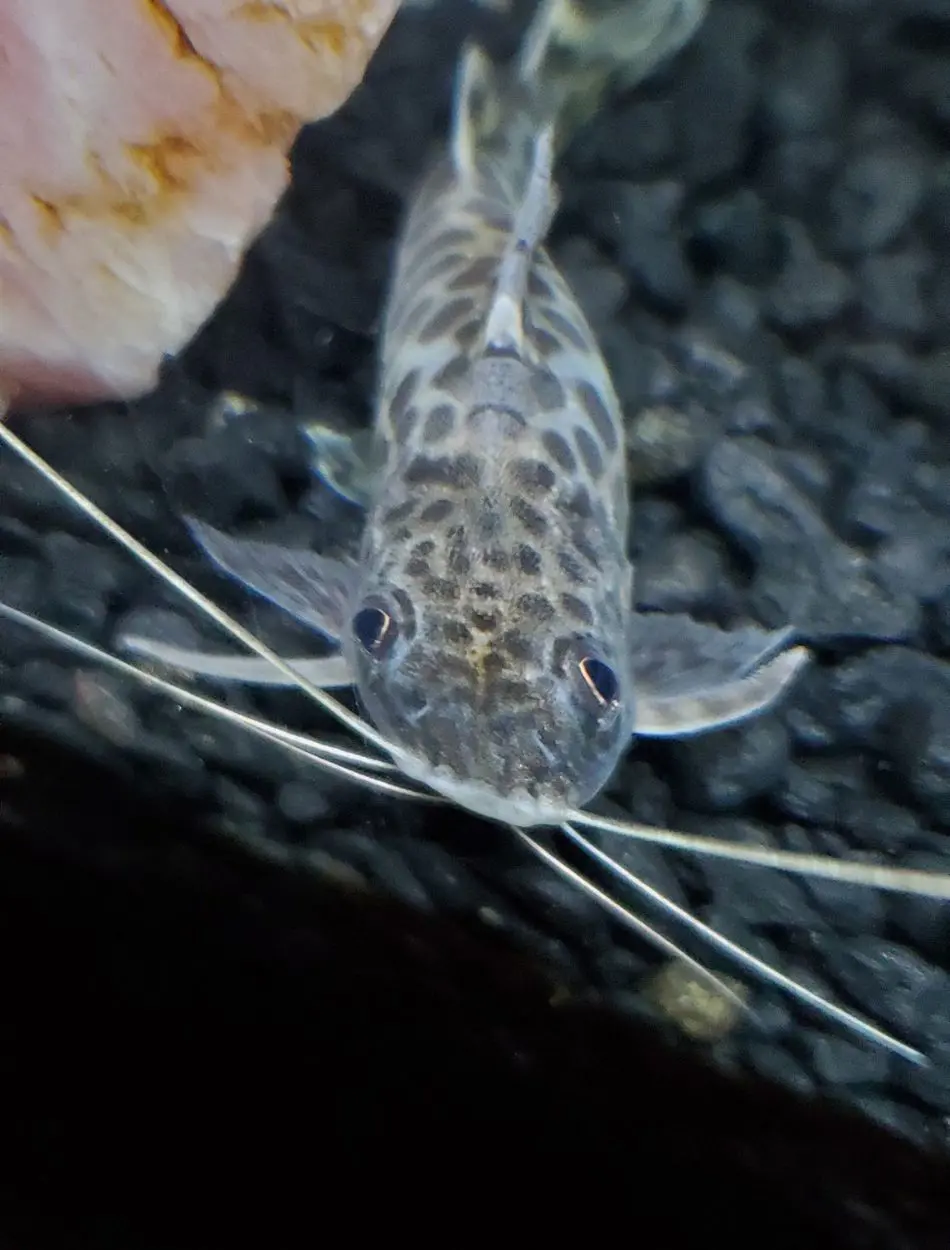
Pictus catfish are generally hardy, but poor water conditions and stressed fish can easily trigger health problems. Health problems common among these species include:
Ich
- It is a parasitic infestation that presents small white spots on the fish's body fins and gills.
- The disease is very contagious and can thus quickly affect the whole tank, so treatment should start immediately to avoid new infections.
- Treatment generally consists of increasing the water temperature and using certain medications to kill off the parasitic organism.
Fin Rot
- Fin Rot is a type of bacterial infection that is caused by poor water conditions or injury, causing the fins to fray and rot away.
- In some cases, if unchecked, the infection can enter the body, causing severe damage to health.
- Treating aquarium water regularly through maintenance and adding antibacterial solutions can help cure the condition.
Fungal Infections
- When the fish's skin is damaged, it becomes more easily affected by fungal infections, and white asterisked patches emerge on its body or fins.
- They can be uncomfortable and, if left untreated, turn into more serious health problems.
- This treatment includes antifungal agents and tank management factors to prevent recurrences.
Seasonal Impact

They experience seasonal changes in their natural habitat that can impact their behavior and well-being. In the wild, these seasonal variations typically involve changes in water temperature, water levels, and food availability, influencing their feeding, breeding, and migratory patterns.
During the rainy season, which typically corresponds to warmer months, river levels rise, and the water becomes more turbid. This season brings abundant food, as flooding allows the catfish to access new areas rich in organic matter and small aquatic organisms.
Controlling Algae in the Tank
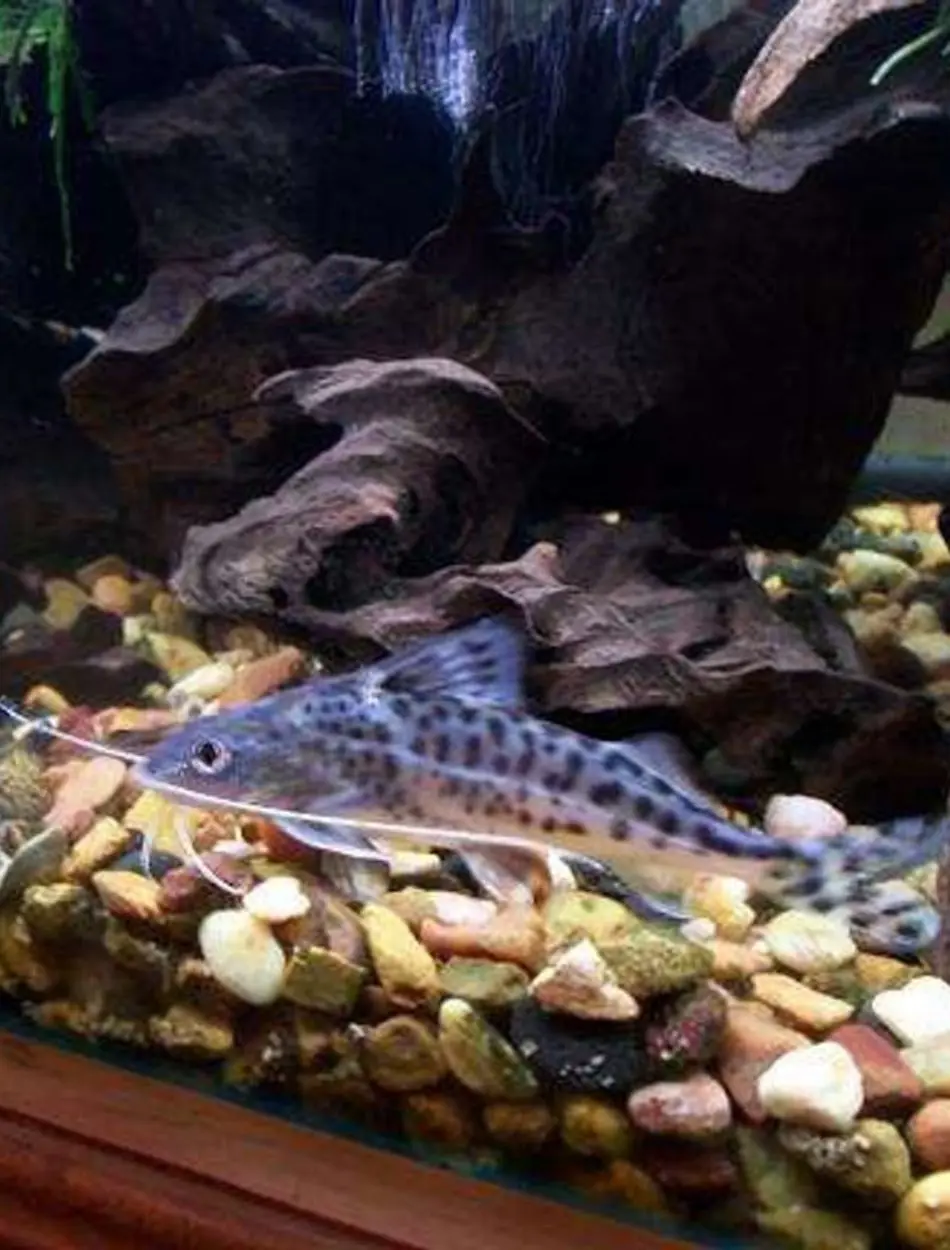
The quality of water and the view of your tank are the first things that come to mind when keeping an aquarium. One of the most significant things in terms of quality water and the pleasant view of the aquarium is algae care. Here is some advice:
Algae-Eaters
- Specialized algae-eating species, such as nerite snails or bristle nose plecos, can be added to slow down the growth of algae.
- The creatures eat algae so that it won't overgrow the tank, thus promoting an equilibrium ecosystem.
Light Control
- Providing too much light causes algae to grow more quickly, resulting in those unsightly blooms that can eventually cover your tank.
- Algae will be kept under control by controlling the duration and intensity of light by using timers as well as reducing its presence in the environment.
Balanced Feeding
- If you feed your fish too much, it decays and adds up to the nitrogen/phosphorus-rich detritus in water that helps algae propagate.
- If you feed your fish lightly and remove any uneaten food before it rots, algae are also not likely to take hold in your tank.
Live Plants
- Keeping live plants in an aquarium improves its aesthetics and however also competes with algae for nutrients.
- Well, this competition means you have less than blooms and hence is just a more natural filter for your tank.
Regular maintenance and proper feeding practices help keep algae under control and your tank looking its best.
Long-Term Health

The long-term health of Pictus Catfish requires regular care and attention. The following are some of the best practices:
Water Testing
- Testing the water to check pH, ammonia, nitrate, and nitrite levels needs to be conducted regularly as it is necessary for your fish's survival.
- These parameters should be maintained unchanged to avoid the various toxic build-ups that can affect your Pictus Catfish and other members of a community tank.
Weekly Water Changes
- Weekly partial water changes of 20-30% will dilute toxins & waste, keeping the water quality high.
- Keep up with regular water changes to prevent disease and encourage a good environment for your fish.
Balanced Diet
- Feeding them high-quality sinking pellets, along with frozen foods and an occasional live treat can be a great way of providing the Pictus Catfish with a well-balanced diet.
- Proper nutrition gives not only good color, it also keeps them in conditions of sustained and active health.
Observation
- Regularly checking up on your Pictus Catfish can be the difference between a fast recovery in stressful situations or an untimely death.
- Early signs of stress and illness include disturbances in behavior, appetite changes as well as appearance differences (i.e., discoloration).
- Avoidative early treatment to handle possible health issues before they get out of hand will certainly guarantee long-term special needs and also refund investment in your fish.
Regular and timely care and observation are important for their development, activeness, and longevity.
Top Lists


